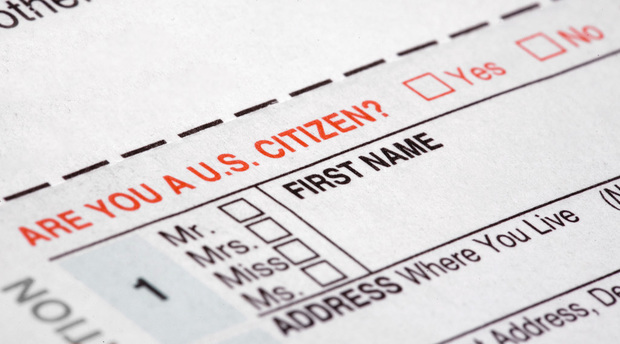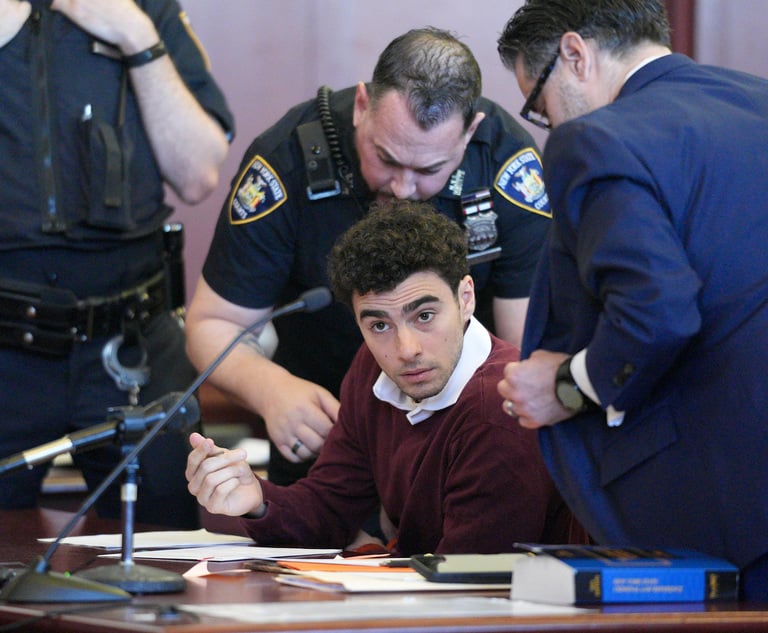It's Not Too Late! Developing a Backup Plan for Your Foreign Workers
As H-1B cap subject petition receipt notices begin to trickle in, and employers are being notified as to whether their foreign employees will obtain…
July 25, 2019 at 10:32 AM
5 minute read
 iStockPhoto.com
iStockPhoto.com
As H-1B cap subject petition receipt notices begin to trickle in, and employers are being notified as to whether their foreign employees will obtain an H-1B visa this cap season, it is a necessity to think about other viable options to continue to maintain and even grow your international workforce.
U.S. Citizenship and Immigration Services announced that it had received 201,011 H-1B petitions during the filing period, which began April 1, including petitions filed for the advanced degree exemption. USCIS received approximately 10,000 more H-1B cap subject petitions this year than last, and the obvious demand for H-1B visas remain. Each fiscal year, 65,000 H-1B visas are available with an additional 20,000 H-1B visas available for individuals holding a master's degree or higher from a U.S. university.
In light of this, employers are strongly encouraged to analyze alternate visa options in the event their employees are not selected for the H-1B cap this year.
- An F-1 student who is still in status and has no other options might consider pursuing another level of study in F-1 status in order to continue to remain in the U.S.
- Students working under the Optional Practical Training (OPT) in science, technology, engineering and mathematics (STEM) fields are eligible for an extended (now 24-month) period of OPT. The longer period of STEM OPT will allow some former students another chance to be sponsored for “capped” H-1B employment next year, but it comes with increased reporting, training and monitoring obligations for the employer and student.
- L-1A or L-1B status may be available for individuals who have qualifying experience in a specialized knowledge or managerial position with a related entity. Employers could pursue a strategy in transferring an employee abroad for one year and then back to the U.S. as a multinational business transferee.
- H-4 dependent spouses of H-1B workers may be eligible for work authorization if the H‑1B spouse is the principal beneficiary of an approved I-140 immigrant petition or is in H‑1B status beyond the normal six-year maximum under the “AC21″ law.
- Canadian or Mexican nationals may be able to pursue TN, or nonimmigrant, classification.
- Australians can pursue E-3 classification for specialized occupations requiring a bachelor's degree.The E visa often allows companies to manage global mobility and meet hiring needs. The E-1 and E-2 categories comprise treaty traders and treaty investors entitled to be in the U.S. under a bilateral treaty of commerce and navigation between the U.S. and the country of which the investor/trader is a citizen or national. In essence, these visa options allow for foreign organizations which maintain subsidiaries in the U.S., of which the foreign organization owns more than 50 percent, to sponsor essential workers, specialized skills workers, and professional employees in the U.S.
- The B-1 in lieu of H-1B visa is an often-overlooked option for international talent transfers to the U.S. on a short-term basis. The B-1 visa category traditionally permits foreign individuals to enter the U.S. for temporary, business-related activities. B‑1 business visitors may not engage in productive work while in the U.S. A hybrid visa called the “B-1 in lieu of H-1B” recognizes that in some situations an individual who would otherwise qualify for an H-1B may more appropriately be classified as a B-1 visa applicant when the applicant is coming to the U.S. temporarily to perform professional duties related to their overseas employment, will not enter the U.S. labor market, and will remain on their overseas payroll.
- Concurrent or Cap Exempt employment may be permitted in very specific circumstances. Some employers are not subject to the limitations of the FY Cap — these can include colleges or universities, nonprofit entities “affiliated or related” to a university, nonprofit research organizations, governmental research institutions, and workers employed “at” such entities (even if not “by” such entities) if the worker spends a majority of their work time performing duties that directly further the purpose/objectives of the cap-exempt organization. As long as an employee does not “cease to be employed” with the cap-exempt employer, he or she can concurrently work for an employer who would otherwise be subject to the cap. The cap-subject employer would be required to file a separate H-1B petition and provide evidence of the ongoing concurrent cap-exempt employment, but this can be a feasible option for individuals who can find cap-exempt employment.
Even those employers with workers selected for H-1B cap subject processing should remain open to considering alternate visa options as well. The current administration has tightened the reins on U.S. immigration, and enhanced review and scrutiny of H-1B petitions has led to a tremendous spike in Requests for Evidence and even denials. Employers continue to face increasing hurdles when petitioning for foreign employees and must dedicate more time and resources to respond to detailed requests for evidence and seek alternative and creative immigration options for those foreign nationals whose petitions are denied.
Dilnaz Saleem is of counsel in the Houston office of Baker Donelson and a member of the firm's Labor and Employment Group. She focuses her practice on corporate immigration and employment matters. She can be reached at [email protected].
This content has been archived. It is available through our partners, LexisNexis® and Bloomberg Law.
To view this content, please continue to their sites.
Not a Lexis Subscriber?
Subscribe Now
Not a Bloomberg Law Subscriber?
Subscribe Now
NOT FOR REPRINT
© 2025 ALM Global, LLC, All Rights Reserved. Request academic re-use from www.copyright.com. All other uses, submit a request to [email protected]. For more information visit Asset & Logo Licensing.
You Might Like
View All

Nondisparagement Clauses in Divorce: Balancing Family Harmony and Free Speech
6 minute read

Trending Stories
- 1FTX One Year Later: The Impact on Examiner Practice in Bankruptcy Courts
- 2Gen AI Legal Contract Startup Ivo Announces $16 Million Series A Funding Round
- 3DOJ's Flawed Thinking in Challenging HPE-Juniper Merger
- 4Annual Self-Check: Testing For Bias On The Bench
- 5'None of Us Like It': How Expedited Summer Associate Recruiting Affects Law Students and the Firms Hiring Them
Who Got The Work
J. Brugh Lower of Gibbons has entered an appearance for industrial equipment supplier Devco Corporation in a pending trademark infringement lawsuit. The suit, accusing the defendant of selling knock-off Graco products, was filed Dec. 18 in New Jersey District Court by Rivkin Radler on behalf of Graco Inc. and Graco Minnesota. The case, assigned to U.S. District Judge Zahid N. Quraishi, is 3:24-cv-11294, Graco Inc. et al v. Devco Corporation.
Who Got The Work
Rebecca Maller-Stein and Kent A. Yalowitz of Arnold & Porter Kaye Scholer have entered their appearances for Hanaco Venture Capital and its executives, Lior Prosor and David Frankel, in a pending securities lawsuit. The action, filed on Dec. 24 in New York Southern District Court by Zell, Aron & Co. on behalf of Goldeneye Advisors, accuses the defendants of negligently and fraudulently managing the plaintiff's $1 million investment. The case, assigned to U.S. District Judge Vernon S. Broderick, is 1:24-cv-09918, Goldeneye Advisors, LLC v. Hanaco Venture Capital, Ltd. et al.
Who Got The Work
Attorneys from A&O Shearman has stepped in as defense counsel for Toronto-Dominion Bank and other defendants in a pending securities class action. The suit, filed Dec. 11 in New York Southern District Court by Bleichmar Fonti & Auld, accuses the defendants of concealing the bank's 'pervasive' deficiencies in regards to its compliance with the Bank Secrecy Act and the quality of its anti-money laundering controls. The case, assigned to U.S. District Judge Arun Subramanian, is 1:24-cv-09445, Gonzalez v. The Toronto-Dominion Bank et al.
Who Got The Work
Crown Castle International, a Pennsylvania company providing shared communications infrastructure, has turned to Luke D. Wolf of Gordon Rees Scully Mansukhani to fend off a pending breach-of-contract lawsuit. The court action, filed Nov. 25 in Michigan Eastern District Court by Hooper Hathaway PC on behalf of The Town Residences LLC, accuses Crown Castle of failing to transfer approximately $30,000 in utility payments from T-Mobile in breach of a roof-top lease and assignment agreement. The case, assigned to U.S. District Judge Susan K. Declercq, is 2:24-cv-13131, The Town Residences LLC v. T-Mobile US, Inc. et al.
Who Got The Work
Wilfred P. Coronato and Daniel M. Schwartz of McCarter & English have stepped in as defense counsel to Electrolux Home Products Inc. in a pending product liability lawsuit. The court action, filed Nov. 26 in New York Eastern District Court by Poulos Lopiccolo PC and Nagel Rice LLP on behalf of David Stern, alleges that the defendant's refrigerators’ drawers and shelving repeatedly break and fall apart within months after purchase. The case, assigned to U.S. District Judge Joan M. Azrack, is 2:24-cv-08204, Stern v. Electrolux Home Products, Inc.
Featured Firms
Law Offices of Gary Martin Hays & Associates, P.C.
(470) 294-1674
Law Offices of Mark E. Salomone
(857) 444-6468
Smith & Hassler
(713) 739-1250






